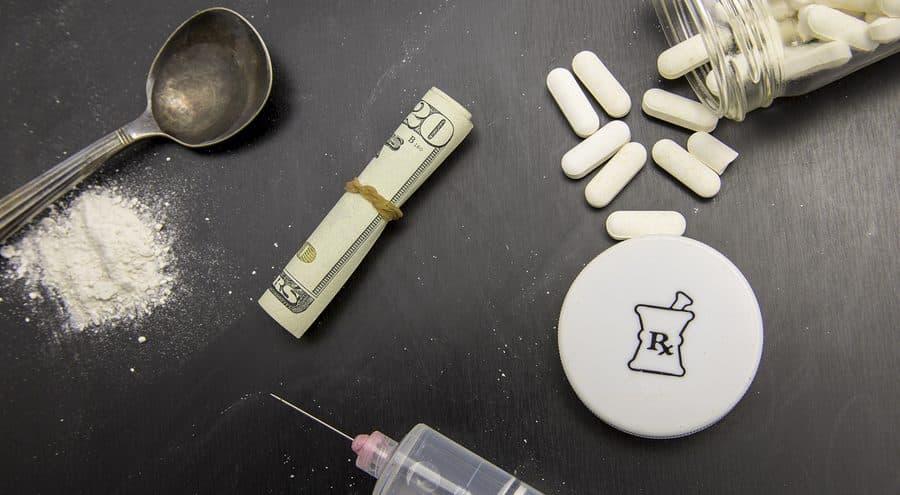The deadliest drug in America does not come from a shady street corner transaction. It’s available at your local pharmacy.
Fentanyl just replaced heroin as the deadliest drug in the United States. Between 2013 and 2016, the Fentanyl overdose rate increased over 500 percent. This drug is now responsible for about 16,000 overdose deaths per year, or about a third of the total.
Many people combine Fentanyl with alcohol or other drugs, and that combination makes this prescription painkiller even deadlier.
Fentanyl Overdose
The strongest opioid pain reliever known to man is between 50 and 100 times stronger than heroin. Fentanyl overdoses have killed thousands of people, including both Tom Petty and Prince.
Furthermore, the Food and Drug Administration has repeatedly warned about the risk of Fentanyl-induced respiratory depression. The trouble breathing, and shallow breathing, are especially dangerous for people who are not used to an around-the-clock painkiller.
The Fentanyl patch is a good option for people who have trouble swallowing or otherwise taking oral medication. These patches are also ideal for people who struggle with the worst kind of severe, chronic pain yet, for whatever reason, are not good candidates for corrective surgery.
But many doctors wrongfully prescribe Fentanyl to patients who do not need it. In many cases, a weaker opioid, or another treatment option, is much better than dangerous Fentanyl. Even if used as directed, Fentanyl is potentially addictive. Since the medicine enters the bloodstream continually, whether the pain is acute or not, many people just experience the heroin-like high.
So, many patients pressure their doctors into writing Fentanyl prescriptions. “Pill mills” are a problem in other areas. At these questionable clinics, doctors write opioid prescriptions and do not ask too many questions.
Legally, the doctor who wrote the prescriptions is usually responsible for damages. Even if an overdose injured or killed the patient, that overdose is definitely a foreseeable consequence of a Fentanyl prescription.
Damages in these cases usually include compensation for both economic losses, such as medical bills, and noneconomic losses, such as pain and suffering.
Defective Fentanyl Patches
The drug itself is dangerous enough, and on top of this, Fentanyl’s delivery system may be flawed.
Around 2008, the FDA recalled a number of leaking Fentanyl patches. These patches pumped medication into the body at irregular intervals and at much higher doses than intended. Many of these patches were sold under the following brand names:
- Duragesic,
- Sandoz, and
- Actavis (Abrika).
If you or a loved one was seriously injured or killed while using one of these defective patches, you may have a claim against the manufacturer. Drug makers are strictly liable for the injuries which their defective products cause, and adverse FDA action is essentially a presumption of defect.
Normally, the statute of limitations in wrongful death cases is two years. But in many dangerous drug cases, the discovery rule applies. The Second Circuit Court of Appeals, which covers an area that includes New York, recently expanded the discovery rule even further. THis legal doctrine states that the statute of limitations does not begin to run until the victim:
- Knows the full extent of the loss, and
- Connects the loss with the defendant’s dangerous product.
Assume Sam, a Sandoz patch patient, died in 2010. Ordinarily, his family’s legal claim for damages would have expired in 2012. But if the family did not know about the defective patch until 2018, they would have until 2020 to file a claim against the manufacturer.
In addition to compensatory damages, defective drug victims are often entitled to additional punitive damages.
Opioid Litigation
The sweeping opioid epidemic has not just harmed individuals and families. In many cases, the epidemic has wrecked entire communities.
To deal with the crisis, cash-strapped local governments have incurred enormous expenses. They have paid for things like more hospital space, expanded drug rehabilitation infrastructure, and additional social services. Typically, these communities did not have the extra money to spend on things like these.
So, a number of cities in New York and other states have asked Napoli Law to obtain compensation for them in court. This experience means that we are well-positioned to serve you. To obtain legal compensation, our governmental opioid litigation section can use a novel legal theory called nuisance.
In this context, a nuisance is a lot worse than a barking dog or a loud stereo. A nuisance is something that causes widespread harm to thousands of people. Nuisance cases are usually easier to prove than negligence or defective product cases. However, nuisance claims have lots of moving parts. So, you attorney must be highly experienced in these matters.
Opioid painkiller overdoses kill roughly 175 Americans every day. For a free consultation with an experienced dangerous drug attorney in New York, contact Napoli Shkolnik PLLC. We do not charge upfront legal fees in these cases.
